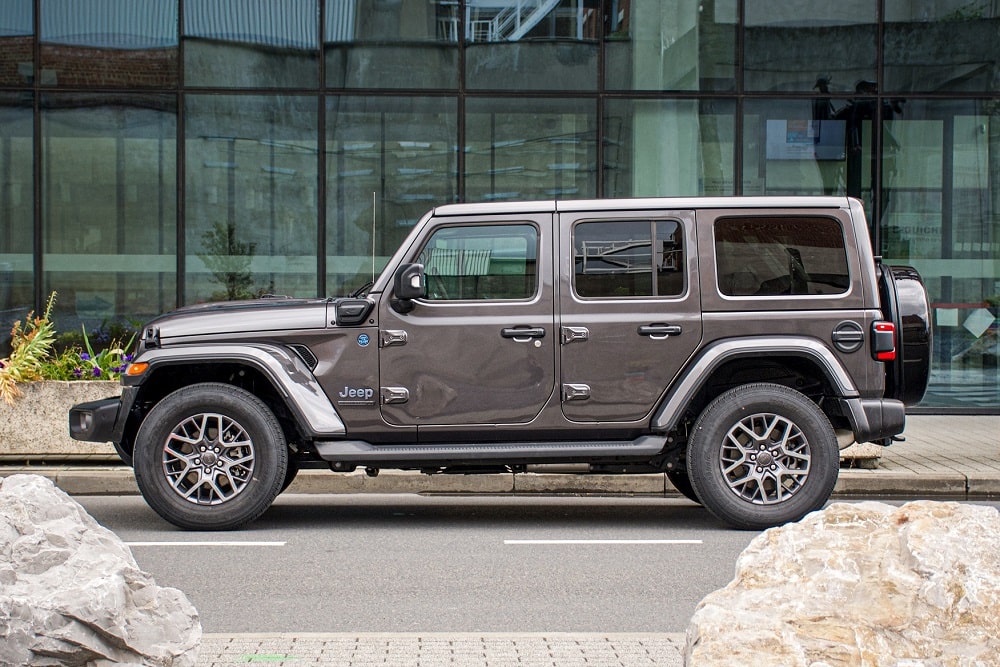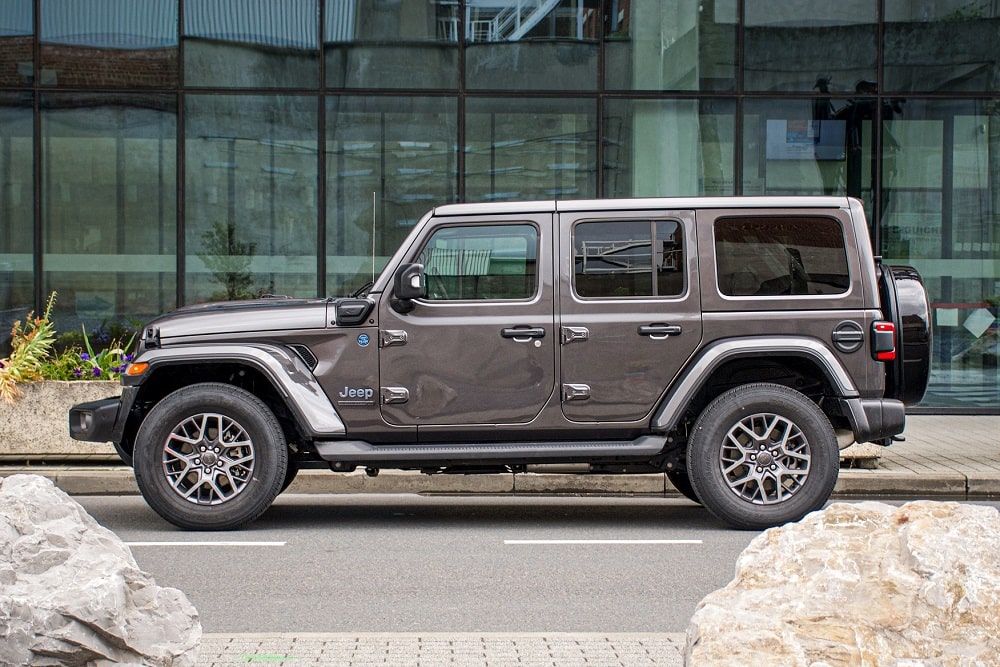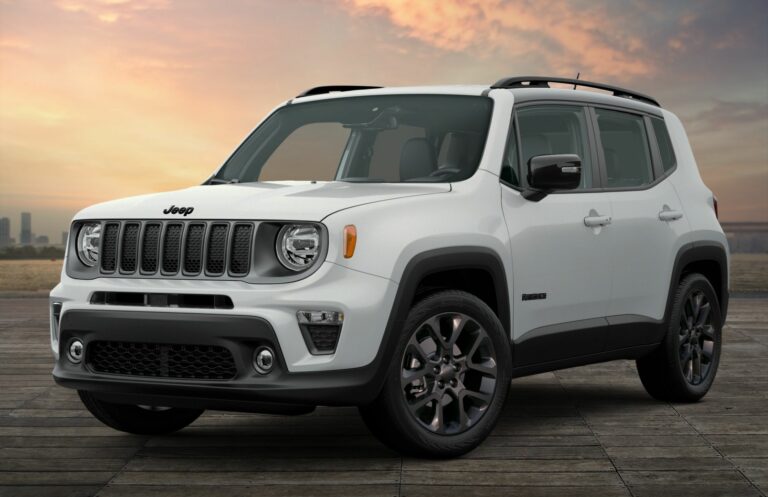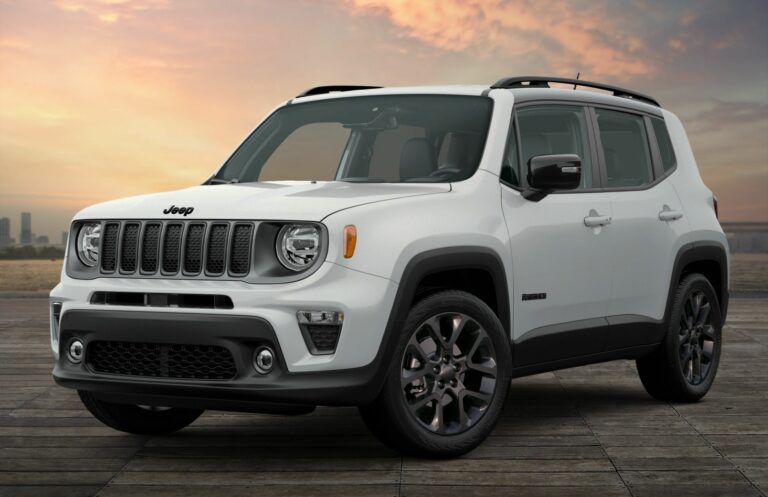Wrangler Jeep Weight: Understanding the Foundation of Performance and Capability
Wrangler Jeep Weight: Understanding the Foundation of Performance and Capability jeeps.truckstrend.com
The Jeep Wrangler, an icon of adventure and off-road prowess, is renowned for its rugged design and go-anywhere capability. However, beneath its legendary exterior lies a critical factor that profoundly influences every aspect of its performance, efficiency, and safety: its weight. Understanding "Wrangler Jeep Weight" isn’t just about a number on a spec sheet; it’s about comprehending the engineering, the capabilities, and the limitations of this extraordinary vehicle. From acceleration and fuel economy to towing capacity and off-road agility, the weight of a Wrangler plays a pivotal role in its character and how it performs in the wild and on the pavement. This comprehensive guide will delve into the nuances of Wrangler weight, exploring its various facets and providing practical insights for owners and prospective buyers alike.
The Core Concepts of Vehicle Weight: Curb Weight, GVWR, and GCWR
Wrangler Jeep Weight: Understanding the Foundation of Performance and Capability
Before we dive into specific Wrangler models, it’s essential to define the key weight terms that govern any vehicle:
- Curb Weight: This is the actual weight of the vehicle with all standard equipment, fluids (oil, coolant, full tank of fuel), but without passengers or cargo. It represents the vehicle in its ready-to-drive state, straight from the factory.
- Gross Vehicle Weight Rating (GVWR): This is the maximum permissible total weight of the fully loaded vehicle, including the vehicle itself (curb weight), all passengers, cargo, and any accessories. Exceeding the GVWR is dangerous and can lead to structural damage, reduced braking performance, and even legal issues.
- Gross Combined Weight Rating (GCWR): If you plan to tow, the GCWR becomes crucial. It’s the maximum permissible total weight of the tow vehicle (Wrangler), its passengers, cargo, plus the weight of the trailer and its cargo. This rating ensures the entire setup can safely accelerate, brake, and handle.
- Payload Capacity: Derived from GVWR, payload capacity is the maximum amount of weight (passengers + cargo) a vehicle can safely carry. It’s calculated by subtracting the curb weight from the GVWR.
- Towing Capacity: This is the maximum weight a vehicle is rated to tow. For Wranglers, this typically ranges from 2,000 to 3,500 pounds, depending on the model and configuration.

Factors Influencing Wrangler Weight
The weight of a Jeep Wrangler is not static; it varies significantly based on several key factors:
- Body Style:
- 2-Door vs. 4-Door (Unlimited): The 4-door Unlimited models are substantially heavier than their 2-door counterparts due to the longer chassis, additional doors, and increased interior volume. This is often the most significant differentiator in Wrangler weight.

- Trim Level:
- Sport: Typically the lightest trim, offering a more basic setup.
- Sahara: Adds more comfort and convenience features, often including power windows, upgraded interiors, and larger wheels, which increase weight.
- Rubicon: Designed for extreme off-roading, the Rubicon adds heavy-duty components like larger axles, electronic locking differentials, a disconnecting sway bar, rock rails, and larger tires, all contributing to a higher curb weight.
- High Altitude/392: Premium trims with luxury features and, in the case of the 392, a larger, heavier V8 engine, further increasing the overall mass.

- Engine and Transmission:
- Engine Size: The 3.6L Pentastar V6 is lighter than the 2.0L Turbo (surprisingly, the turbo system adds weight), the 3.0L EcoDiesel (which is heavier), and especially the 6.4L V8 in the Rubicon 392.
- Transmission Type: Manual transmissions are generally slightly lighter than their automatic counterparts, though this difference is often negligible in the overall weight.
- Top Configuration:
- Soft Top: The lightest option.
- Hardtop (3-piece Freedom Top): Adds considerable weight due to its rigid structure and sound deadening.
- Power Top (Sky One-Touch Power Top): While convenient, the electric motors and mechanisms add even more weight than a standard hardtop.
- Optional Features and Packages: Winches, heavy-duty bumpers, larger tires, bigger wheels, upgraded sound systems, and additional protective skid plates all add pounds to the Wrangler’s curb weight.
Why Wrangler Weight Matters: Impact on Performance, Efficiency, and Safety
Understanding your Wrangler’s weight has tangible implications for its operation:
- Performance (Acceleration & Braking): A heavier vehicle requires more power to accelerate and takes longer to stop. While Wranglers are not built for speed, excessive weight can noticeably dull performance.
- Fuel Economy: Simply put, more weight equals more fuel consumption. Every extra pound your engine has to move translates to a greater demand for fuel.
- Towing and Payload Capacity: Weight directly dictates what you can safely tow and carry. Exceeding these limits can strain the engine, transmission, brakes, and suspension, leading to premature wear or dangerous failures.
- Off-Roading Dynamics:
- Maneuverability: A lighter Wrangler can feel more nimble and responsive on tight trails.
- Flotation: On soft surfaces like sand or snow, a lighter vehicle has a better "flotation" effect, preventing it from sinking as easily.
- Articulation/Stability: While some weight can aid stability, too much weight can reduce suspension articulation or make the vehicle top-heavy.
- Safety: Overloaded vehicles are inherently less safe. They have longer braking distances, reduced steering response, and can be more prone to rollovers.
- Wear and Tear: Heavier vehicles put more stress on components like tires, brakes, suspension, and drivetrain, potentially leading to faster wear and increased maintenance costs.
Managing and Optimizing Wrangler Weight
Given the impact of weight, here are some practical tips for Wrangler owners:
- Know Your Numbers: Always check the GVWR, GCWR, and payload capacity listed on your specific vehicle’s door jamb sticker.
- Don’t Overload: Resist the urge to pack everything you own into your Wrangler, especially for off-road trips. Only carry what’s essential.
- Consider Aftermarket Modifications Carefully:
- Bumpers & Winches: Steel aftermarket bumpers and winches can add 150-300+ lbs to the front end alone. Factor this into your suspension choices.
- Larger Tires & Wheels: Heavier tires and wheels significantly increase unsprung weight, impacting acceleration, braking, and fuel economy.
- Roof Racks & Rooftop Tents: These add weight high up, raising the center of gravity and potentially affecting stability on inclines or uneven terrain.
- Lightweight Alternatives: If weight is a concern, consider aluminum bumpers, synthetic winch lines, or lighter alloy wheels.
- Proper Weight Distribution: When loading cargo, try to distribute the weight evenly within the vehicle, keeping heavier items low and centered.
Challenges and Solutions Related to Wrangler Weight
- Challenge: Aftermarket Mods Adding Excessive Weight: Many popular Wrangler modifications (heavy-duty bumpers, winches, roof racks, larger tires) add significant weight, often exceeding what the factory suspension is designed for.
- Solution: Upgrade your suspension. Investing in heavier-duty springs, shocks, and potentially a lift kit designed for the added weight is crucial to maintain ride quality, handling, and prevent premature wear. Re-gearing axles may also be necessary to compensate for larger tires and regain lost performance.
- Challenge: Reduced Fuel Economy: The inherent weight of a Wrangler, especially a 4-door Rubicon with a V8, combined with aftermarket additions, can lead to surprisingly low MPG.
- Solution: Drive conservatively, perform regular maintenance, and consider shedding unnecessary weight where possible. Some owners might opt for engine tuning or lighter wheels/tires.
- Challenge: Exceeding Payload/Towing Capacity: It’s easy to underestimate the weight of passengers, gear, and a trailer, potentially pushing beyond the Wrangler’s limits.
- Solution: Use a scale! Weigh your fully loaded Wrangler and your trailer if you’re unsure. Plan your trips, and if you frequently need to carry heavy loads or tow, consider a vehicle with higher ratings or adjust your packing strategy.
Wrangler Jeep Weight Table: Models, Capabilities, and Starting Prices
Below is a representative table illustrating the approximate curb weights, GVWR, payload, and towing capacities for various 2024 Jeep Wrangler (JL generation) models. Note that these figures can vary slightly based on specific options, engine choices, and model year. Starting MSRPs are provided for context as of early 2024.
| Wrangler Model/Trim (2024 JL) | Body Style | Engine Type | Approx. Curb Weight (lbs) | GVWR (lbs) | Payload Capacity (lbs) | Max Towing Capacity (lbs) | Starting MSRP (Approx.) |
|---|---|---|---|---|---|---|---|
| Sport | 2-Door | 3.6L V6 / 2.0L Turbo | 3,970 – 4,200 | 5,000 | 1,030 – 1,180 | 2,000 | $32,000 |
| Sport S | 4-Door | 3.6L V6 / 2.0L Turbo | 4,200 – 4,400 | 5,300 | 1,100 – 1,200 | 3,500 | $36,000 |
| Sahara | 4-Door | 3.6L V6 / 2.0L Turbo | 4,400 – 4,600 | 5,500 | 1,000 – 1,100 | 3,500 | $47,000 |
| Rubicon | 2-Door | 3.6L V6 / 2.0L Turbo | 4,200 – 4,400 | 5,200 | 900 – 1,000 | 2,000 | $45,000 |
| Rubicon | 4-Door | 3.6L V6 / 2.0L Turbo | 4,500 – 4,700 | 5,800 | 950 – 1,050 | 3,500 | $49,000 |
| Rubicon 392 | 4-Door | 6.4L V8 | 5,100 – 5,200 | 6,350 | 900 – 950 | 3,500 | $90,000+ |
| Wrangler 4xe (PHEV) | 4-Door | 2.0L Turbo PHEV | 5,100 – 5,300 | 6,200 – 6,300 | 800 – 900 | 3,500 | $50,000+ |
Note: Weights are approximate and can vary based on specific options, packages, and model year. Always refer to your vehicle’s door jamb sticker for precise figures.
Frequently Asked Questions (FAQ) about Wrangler Jeep Weight
Q1: What is the lightest Jeep Wrangler model?
A1: Generally, the 2-door Sport or Sport S models with the manual transmission and soft top will be the lightest Wrangler variants, typically weighing in the 3,900-4,200 lb range.
Q2: How much does a 4-door Wrangler Unlimited weigh?
A2: A 4-door Wrangler Unlimited typically weighs between 4,200 and 4,700 lbs for standard trims (Sport, Sahara, Rubicon). The Rubicon 392 and 4xe models can exceed 5,000 lbs due to their heavier engines and battery packs.
Q3: Does adding a winch and heavy-duty bumpers significantly affect my Wrangler’s weight?
A3: Yes, absolutely. A steel bumper can add 80-150 lbs, and a winch another 60-100 lbs. Combined, these can add 150-300+ lbs to the front end, impacting handling, fuel economy, and potentially requiring suspension upgrades.
Q4: What’s the difference between curb weight and GVWR?
A4: Curb weight is the vehicle’s empty weight with fluids. GVWR is the maximum weight the vehicle can be when fully loaded with passengers, cargo, and all accessories. The difference between GVWR and curb weight is your payload capacity.
Q5: Can I increase my Wrangler’s payload or towing capacity?
A5: No. Payload and towing capacities are set by the manufacturer based on the vehicle’s engineering and safety standards. While you can upgrade suspension components to better handle heavy loads, you cannot legally or safely increase the rated capacity. Exceeding these limits is dangerous.
Q6: Why are Wranglers considered heavy, especially for their size?
A6: Wranglers are built with heavy-duty components for off-road durability: solid axles, robust frame, thick skid plates, and often larger tires and wheels. Modern Wranglers also include more safety features, sound deadening, and technology, all of which add weight. The 4xe’s battery pack also adds substantial weight.
Q7: How does weight affect off-roading?
A7: Heavier vehicles can sink more easily in soft terrain (sand, mud). They also put more stress on the drivetrain and suspension, especially during aggressive maneuvers. However, some weight can contribute to stability on certain obstacles. It’s a balance, and excessive weight is generally detrimental to off-road performance.
Conclusion
The weight of a Jeep Wrangler is far more than a mere specification; it’s a fundamental characteristic that shapes its capabilities, performance, and the entire ownership experience. From the foundational curb weight to the critical GVWR and GCWR, understanding these numbers empowers owners to make informed decisions about modifications, loading, and safe operation. Whether you’re a purist seeking the lightest, most agile trail rig or an adventurer outfitting your Unlimited for overland expeditions, appreciating the dynamics of Wrangler Jeep weight is key to maximizing its legendary potential while ensuring safety and longevity. By being mindful of these considerations, you can ensure your Wrangler continues to deliver the unparalleled freedom and adventure it’s famous for, without compromise.
![]()



